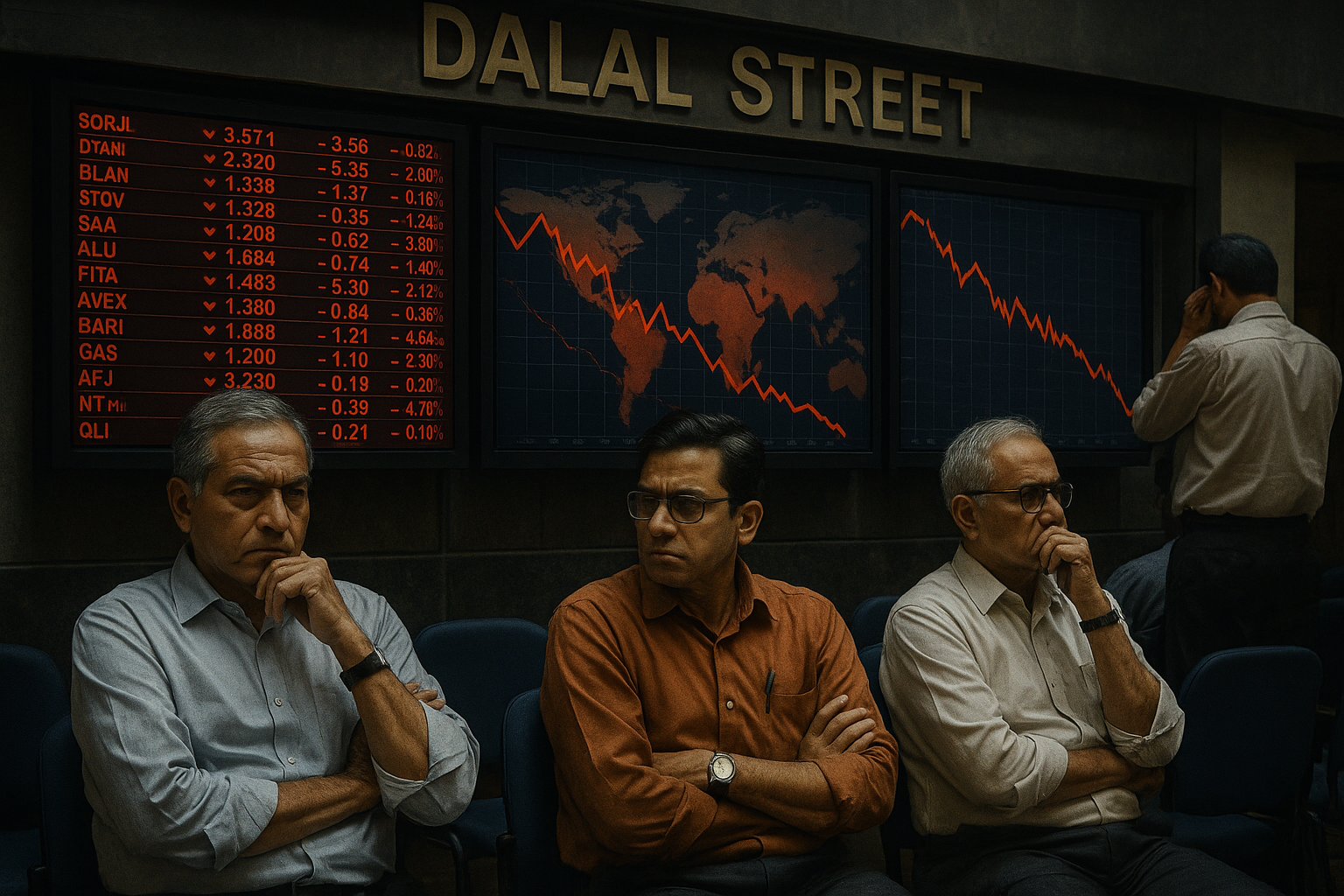Indian equity markets opened on a weak note Wednesday, with the Sensex down 289 points at 81,813 and the Nifty lower by 87 points at 25,082. Global headwinds—ranging from stagflation risks flagged by US Fed Chair Jerome Powell to persistent foreign outflows—dragged indices, despite resilience in PSU banks. Broader markets mirrored the decline, underscoring the pressure from stretched valuations and uncertain global cues.
Core Development
The opening bell saw broad-based selling across sectors, except for PSU banks which gained 0.37%. Key losers included Hero MotoCorp, Titan Company, Tech Mahindra, Tata Motors, and ICICI Bank, while gainers featured Trent, SBI, Asian Paints, Maruti Suzuki, and ONGC
Nifty Auto was the top loser (down 0.71%), followed by Nifty IT (down 0.66%) and Nifty Consumer Durables (down 0.70%). Midcap and Smallcap indices also edged lower, reflecting cautious investor positioning.
Key Drivers / Issues
-
Global market weakness: US indices closed lower, with Nasdaq slipping 0.95% and S&P 500 down 0.55%.
-
Fed concerns: Jerome Powell warned of elevated asset prices and stagflation risks.
-
Foreign flows: FIIs sold equities worth ₹3,551 crore on Tuesday, even as DIIs bought ₹2,671 crore.
-
Valuation pressure: Nifty is 4% below its 2024 peak, but still trades above long-term averages.
Stakeholder Impact
For investors, volatility reflects caution amid global uncertainty. Domestic institutions are providing some support, but sustained FII outflows weigh on sentiment. Sectors tied to consumption and exports may face near-term weakness, while PSU banks emerge as relative safe havens.
Industry & Policy Reactions
Analysts argue that Indian valuations will only be justified when earnings growth accelerates, likely by FY27. Until then, markets may remain vulnerable to global shocks and capital flow volatility.
Challenges Ahead
-
Sustaining domestic demand amid global stagflation fears.
-
Managing high valuations without earnings momentum.
-
Reversing persistent foreign investor selling.
Strategic Outlook
Indian equities remain fundamentally supported by structural growth drivers, but near-term risks are tilted to the downside. Market watchers expect volatility until global inflation, Fed policy clarity, and foreign flows stabilize.
Why This Matters
The sharp opening dip underscores how global risks—from Fed policy to FII outflows—can quickly ripple into Indian markets. With valuations stretched, investors must balance long-term optimism with short-term caution.












